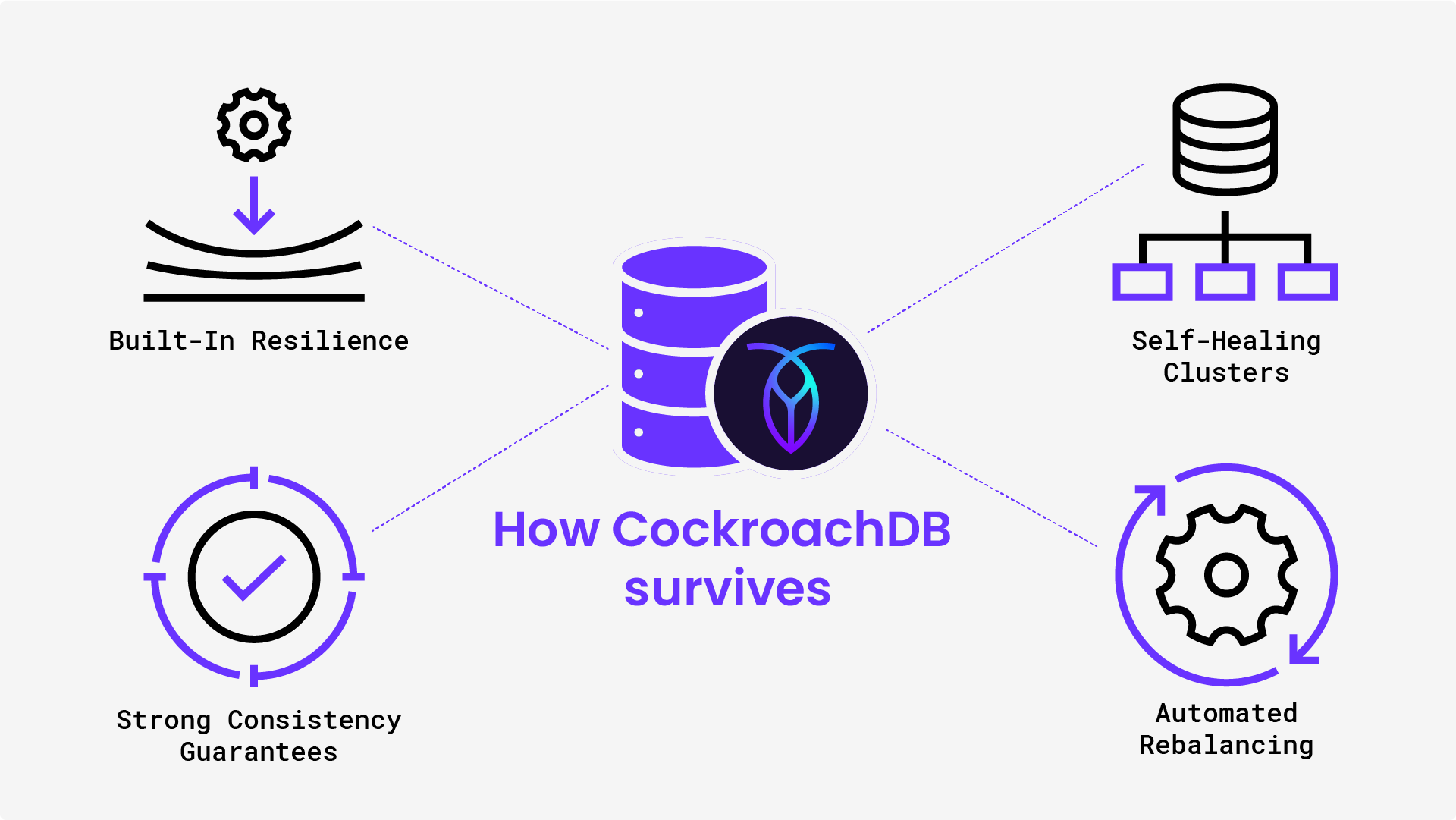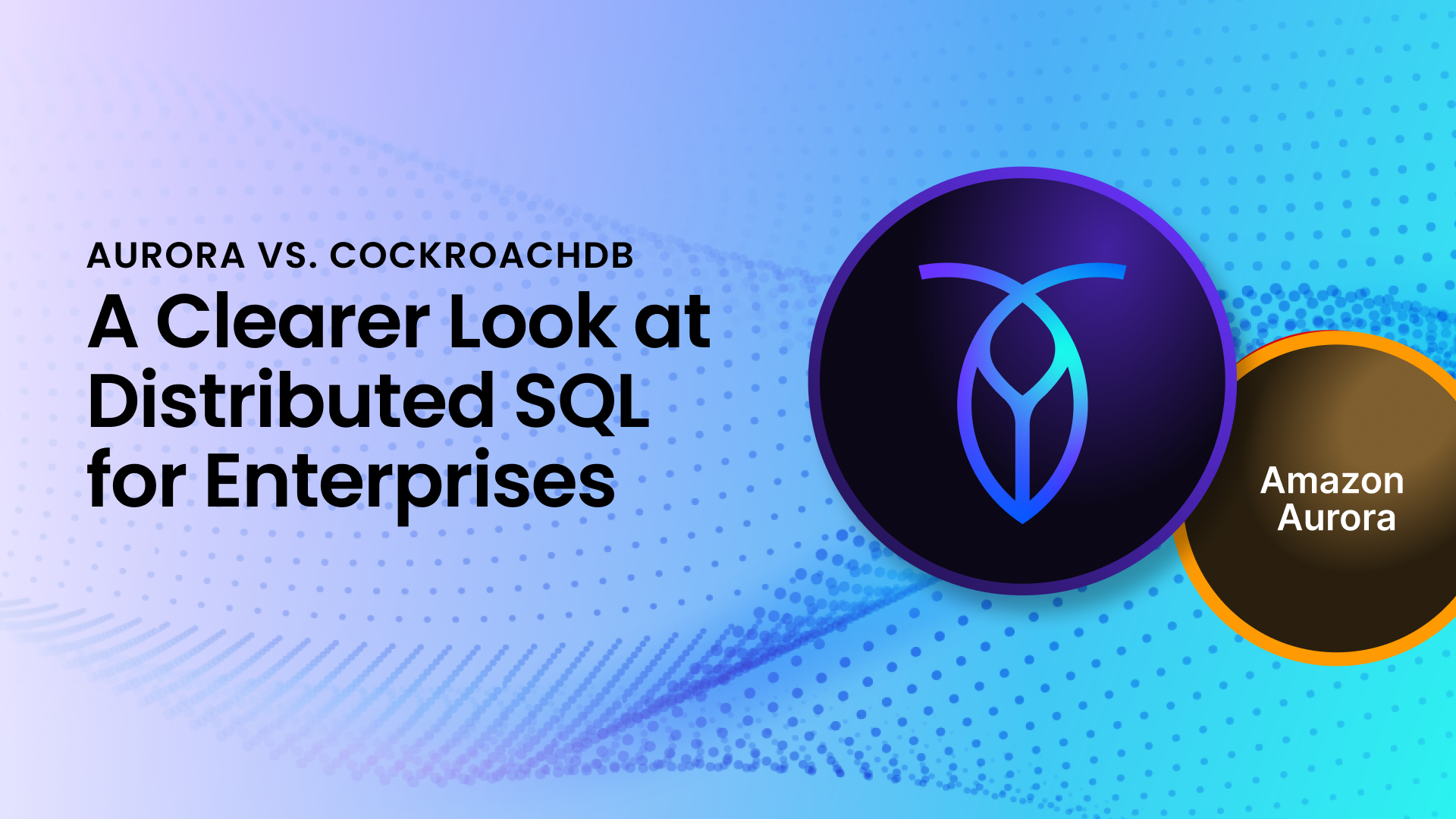You can’t afford downtime, inconsistent data, or complex infrastructure — not during peak season, and not at scale. While CockroachDB is a premium product, it reduces total cost of ownership by eliminating manual operations, enabling global scale, and delivering the resilience required for today’s customer expectations.
Retail Is about Margins. Your Database Shouldn’t Be the Liability.
Today, retailers, especially eCommerce companies, are under immense pressure to do more with less. Traffic spikes during sales events like Black Friday, complex omnichannel experiences, and global customer bases demand a tech stack that can scale seamlessly and perform reliably. But even more unpredictably, business volume can skyrocket if your product hits the social media lottery and goes viral on TikTok, Instagram, or other sites.
Yet many retailers are still running fragile, hand-stitched systems built on legacy relational databases like PostgreSQL or MySQL. These systems weren’t designed for modern eCommerce, and the cracks will show during peak demand, when you desperately need your system to hold.
Especially in the retail and eCommerce space, even a few seconds of latency can mean the difference between a sale and an abandoned cart:
The Hidden Costs of Databases
It’s important when evaluating any part of your tech stack that true costs go far beyond licensing cost. From architecting around high availability, to manually sharding for scale, to constant firefighting during outages — the real cost of your database is in operations, labor, and lost revenue:
Downtime during peak events (like Prime Day at Amazon, Black Friday, and Cyber Monday) costs more than any license fee ever will.
Sharding PostgreSQL creates brittle application logic that’s hard to evolve because every schema change is a risk.
Maintaining consistency across regions can require patchwork workarounds and eat up developer time.
Patching and upgrades often require downtime, something your customers won’t tolerate.
The impact of outages has become especially clear in 2025. After surveying 1,000 senior cloud and technology executives from around the world to understand operational resilience and the true cost of downtime, we found that:
100% of companies surveyed experienced revenue losses from outages in the last year, with per-outage losses ranging from $10,000 to over $1,000,000.
79% of those surveyed admitted their organizations were not as prepared as they wanted for emerging regulations.
70% of large enterprise organizations – companies with more than $500M ARR and over 1,000 employees – reported that it took on average, more than 60 minutes to resolve outages.
Check out the full report here: “The State of Resilience 2025: Confronting Outages, Downtime, and Organizational Readiness.”
Real TCO Savings, Real Retail Outcomes
When an electronics giant was evaluating their database options a few years ago, they found that shifting from MySQL to CockroachDB would save them $700,000 just in their first year of adoption – amounting to a 149% return on investment.
The key challenge for this company of 10,000 employees, was how to build a new cloud-native IoT application that would connect millions of global devices to the web. MySQL simply was not built to accommodate this kind of distributed system out of the box. The developer hours required to shard their existing MySQL database, duplicate large amounts of data, maintain multiple instances, write custom logic, and then manage the downtime required for regular updates and schema changes did not make sense for their business growth.
RELATED
To learn more about how CockroachDB can help enterprises scale their retail & eCommerce businesses, check out this blog: “How to build an inventory management system that scales (with reference architecture)”
CockroachDB: Built for the Retail Reality
CockroachDB was able to provide this company and all of our customers a distributed SQL architecture designed to eliminate the operational overhead that traditional databases require — while preserving the familiarity of SQL and PostgreSQL that your teams rely on.
With CockroachDB, retailers get:
Consistent data across the globe: Whether it’s inventory, pricing, or promotions — you need a single source of truth that’s always up to date, across your warehouses, brick-and-mortar stores, and online presence.
Automatic scale and resiliency: Handle Black Friday spikes without sharding, downtime, or last-minute re-architecture. Only scale up when you have the demand, and scale back down after to cut costs.
Reduce operational overhead, increase developer velocity: No more late-night patching or recovering from painful failovers. Your developers can focus on customer experiences, not babysitting a database.
Online schema changes and rolling upgrades with zero downtime: You can’t avoid database maintenance, but that shouldn’t mean losing out on uptime or sales.
Localized data for performance and compliance: Meet customers where they are, and meet regulations where they matter. Check out our Trust Center to learn more about how we’re navigating the changing legal landscape.
To learn more about how CockroachDB can provide the database foundation necessary for modern retailers & eCommerce businesses to thrive, check out our solutions page.
Beyond the Numbers: Why TCO Should Matter More
Retail lives and dies by customer experience. Outages cost more than just conversions — they cost trust. With new businesses cropping up every day, your brand’s reputation is priceless. You want to deliver high quality products within a high quality customer experience, every single time.
CockroachDB is your insurance policy against data loss, downtime, and dev gridlock. A solid database foundation can give you that peace of mind. Your most critical systems — checkout, inventory, login experience — do not need to be a single point of failure.
Don’t sacrifice the long-term health of your business for short-term games. It’s not about being the cheapest. It’s about being the smartest. And in retail, smart wins.
To learn more, tune in to Cockroach Labs Technical Evangelist Rob Reid (ex-Lush) as he shares best practices in building an inventory management system that is resilient, scales with unpredictable demand, is strongly consistent, and is accurate across markets and geographies:




![[IMAGE] Retail campaign blog #1](/_next/image/?url=https%3A%2F%2Fimages.ctfassets.net%2F00voh0j35590%2F1M7uel54aQJH48Da5glkE3%2Ffb512d0d2493723d983ba8a1e15959af%2FRetail_blog_series_A_1.png&w=3840&q=75)



